
i'm reading the Zadie Smith edited The Book of Other people. I like the way Daniel Clowes (four pages in colour) and Chris Ware (fifteen pages in colour) are presented as authors among other authors, such as Lethem, Foer and Eggers, with the works arranged alphabetically after the name of their titular person. And in the contributors section at the back 'His books include Ghost World etc..." though Ware spoils it at the last minute: "is the author of Jimmy Corrigan- the Smartest Kid on Earth. He is currently serializing two new graphic novels..."
(also of note to my regular readers, Charles Burns draws 13 people on the covers, and Posy Simmonds draws a handful of people in the Nick Hornby contribution, and relevant to yesterday's post, they are 'author photos')
Reading David Mitchell's contribution, I am arrested by an odd linguistic lump of gristle, coming coincidentally not long after some argument over the use of who/whom in comic book circles. "Who do you trust?" is open to being read as a quote of a quote of a quote...
Mitchell gives us these lines:
'June, where the hell is everyone?'The narrative is in the first person, fictional Judith Castle writing. Since 'who' (as subject of verb 'to be') is correct in the second line (twice), am I to read this as some kind of high irony and an undependable narrator, which would be a dodgy trick in these grammatically confused times, and anyway the rest of the story doesn't support that. Alternatively it may be a typo caused by the unfortunate editorial removal of a letter 'm' from the end of line two. Or am I to ascribe it simply to authorial carelessness?
'Who is this and where the hell is who?'
What sort of actress doesn't know her whos from her whoms?
*************
The second part of How Art Made the World aired this week here in Australia. Its subject was the first pictures made by humans, in the caves of Altamira and Lascaux, and Dr Nigel Spivey asked the question "How did the first picturemaker make the first picture when he had never seen a picture before?" This is such a true conundrum. I often watch our dog Monty in front of the television. If a dog barks on screen, Monty rushes out of the house to try and find it. In other words, the moving lights on the screen are meaningless to him. He is incapable of seeing pictures there at all. It must have been the same with humans. We had to learn to see a picture and people were around for many many thousands of years before they got around to painting the first one. What made them think of it?
I recall a similar argument I had many years ago on the subject of drawing and painting 'photographically.' I held that an artist logically could not have painted 'photographically' before the invention of the camera. Photographically is to be differentiated from 'realistically'; the seen world registers differently through an eyeball than through a glass lens. I therefore welcomed Hockney's theories claiming that artists were using lenses to project images from life onto their picture surfaces as early as the Renaissance, because it explained a couple of anomalies in my system, like Holbein for instance. The world being a thoroughly stupid place, Hockney's observations were immediately interpreted as a claim that artists had 'cheated,' and the matter was argued vociferously by the flat earth society over at Artrenewal.com.
******
Following my repeated statement on Tuesday of my fondness for Vince Colletta's work, his granddaughter dropped this comment way back in my original post where it may be overlooked, so I'll copy it to here. Thanks, Katherine..
I'm not sure if this will even be read by anyone but Vincent Colletta was my grandfather and it greatly disturbs me to see the uneccessary, unkind things people have to say about the most wonderful man I have ever had the pleasure of knowing. For the record this man was entirely dedicated to his work and was passionate about it until the very end. I should know I was there- watching him day after day in his basement at his drawing table putting forth everything he had to the point we didn't really have much time to spend together. As long as I was quiet and behaved he would let me sit next to him and I will never forget those memories. I ask to all those with their negative comments to try and exude some class and respect for a man that truly loved his family and worked so incredibly hard to create works of art for millions of people to enjoy. Lets not forget that no one, INCLUDING YOURSELVES, are perfect- we all try as best we can.
Labels: art (2), monty, new books (2)
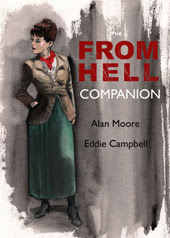


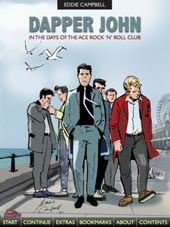
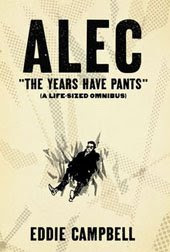
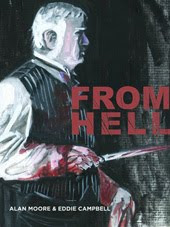
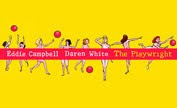
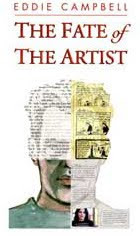
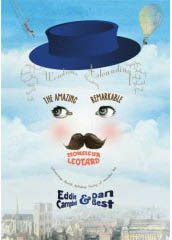





26 Comments:
I have recently purchased Batman: Order of the Beasts simply because I was intrigued by the cover and the blurb written about it on the back of the comic bag. 1939 England? Very cool.
I was glad I made that decision. It's such an amazing story and the artwork is magnificent!
I was wondering if you can provide a bit of advice for an aspiring writer (if you wish, you can peruse it over at my page on Blogspot).
To sum it up, the project I've been doing research for since 2006 is an amalgam of Hellboy, the Shadow and Dick Tracy. Monsters, mobsters, ghosts, gangster, Nazi villains, nasty wizards.
An attempt at "neo-noir" or "post-modern pulp" as someone over at Dark Horse described it once.
I would appreciate any and all feedback and advice as well.
A fan for life...
Gabriel
Ha! The people at ARC have a great site full of big picture scans but their desire to turn the clock back on art history is just silly.
I would have supported you in the photography argument. Two things confirm that: one is the way horses were depicted when running. Until Muybridge made his famous photos of a running horse even great horse painters like George Stubbs had a tendency to represent them in motion with their legs splayed like merry-go-round animals. The other example is water splashes. We know now exactly how water behaves when its motion is arrested but artists tended to depict splashing water as an explosion of spikes rather than an organic form.
Having said that, Gustave Doré didn't do a bad job of these waves.
I almost laughed at the following statement, taken from the article at the art renewal site, except it is kinda sad..
"Hockney doesn't present any examples of his "eyeballed" drawings in his book (he can't draw much better than the average high school student can doodle) but he did "demonstrate" some drawings of faces using optical aids and they are uniformly pretty terrible. For example, these are some drawings Hockney made using optical aids of some guards at the National Museum...
He seems to not be capable of recognizing the failings of his drawings since he puts them next to some drawings by genuine artists of past centuries and claims that this is evidence that they used the same methods as he does. To me, they look rather different, and Hockney's drawings look much worse in general. You can decide for yourself."
Hockney can't draw? He is actually quite a good draftsman, and his drawings are quite good...
sigh
"Following my repeated statement on Tuesday of my fondness for Vince Colletta's work, his granddaughter dropped this comment way back in my original post where it may be overlooked, so I'll copy it to here. Thanks, Katherine..
'I'm not sure if this will even be read by anyone but Vincent Colletta was my grandfather and it greatly disturbs me to see the uneccessary, unkind things people have to say about the most wonderful man I have ever had the pleasure of knowing. For the record this man was entirely dedicated to his work and was passionate about it until the very end. I should know I was there- watching him day after day in his basement at his drawing table putting forth everything he had to the point we didn't really have much time to spend together. As long as I was quiet and behaved he would let me sit next to him and I will never forget those memories. I ask to all those with their negative comments to try and exude some class and respect for a man that truly loved his family and worked so incredibly hard to create works of art for millions of people to enjoy. Lets not forget that no one, INCLUDING YOURSELVES, are perfect- we all try as best we can.'"
I like Vince's inks on Kirby's Thor work -- just like I like Sinnott on FF, or Giacoia on Cap. But. So far as I've seen, the criticism leveled at Mr. Colletta is almost always directed at his work -- no one (so far as I know) ever said he wasn't a "wonderful man" or loving grandfather, etc.
It's unfortunate that any artist's family members have to endure the jabs and shots that come part-and-parcel with the territory (if you are going to release your work into the marketplace). But, it is part of the gig. Exuding of class, or no.
Just my .02...
TUCK!
www.hardballtimes.com
"We had to learn to see a picture and people were around for many many thousands of years before they got around to painting the first one. What made them think of it?"
I think you're conflating the biological perceptual apparatus with the techniques to exploit that apparatus. When THE GREAT TRAIN ROBBERY was first shown to an audience, the audience didn't have to ask someone for operating instructions on how to see the train coming at them. The capability was already there within the eyes and the brain, the technology just had to catch up.
Your take reminds me a bit of a debate between Richard Rorty and Umberto Eco on the role of the reader. Rorty took the radical position that a reader supplies all the meaning to a text. Eco -- quite correctly, I think -- pointed out that if that were true, one would never change any of one's thoughts by reading, since the text offers no resistance to whatever the reader brings to the reading experience. The social constructivist view is even weaker when applying it to photographs and films, since our ability to perceptually interpret 3-D is so automatic, once the technique has sufficiently developed. Why couldn't we just learn to see the same amount of perspective in all paintings, no matter how flat they appear, if the process were just a matter of us having to "learn to see pictures"?
I suspect that the influence of Muybridge's motion-capture photographs (or, really, the photographic medium) on realistic paintings has more to do with providing mankind with a "slice of time" which can be studied at our leisure than any revolution in the perceptual apparatus itself.
As a reader I loved Vinnie Colltta's work on Thor, it softened Kirby's lines and seemed to suit the material perfectly. His early art was always a delight to come across and I'm always disappointed when I read someone attacking him. Colletta was very much a product of his time but he was a better artist and inker than many making a living doing comics these days.
That Hockney book blew my mind -- I loved it because it was all about seeing -- that fantastic wall of pictures he constructed in his studio! When you think of art history in his terms--pre-optical ("awkwardness"), optical ("the disappearance of awkwardness"), and post-optical ("the return of awkwardness")--it all makes perfect sense that the cartoon is thriving in our age...
Charles: regarding Muybridge, that's what I was saying albeit in different (and hastily assembled) words.
Artistic representation is rather a large subject for these kind of circumscribed discussions. I'd recommend anyone interested to check out Gombrich's Art and lllusion and John Berger's Ways of Seeing. The Gombrich especially is a must.
That was very sweet of you to include the comment from Vince Colletta's granddaughter. I didn't see it first time around.
Gabriel,
thanks for the words. As for advice, I couldn't do better than the Gene Fowler quote at the top of your page. Except perhaps to say that I'd throw everything out of the amalgam, and then keep throwing stuff out till what you're left with is pure. I'd throw out Ordrof Beasts too. And From Hell... I'm in a throwing out mood.
Matthew,
A line from the first paragraph on an article about Hockney from many years back has always stuck in my noodle.
"Figurative art is in such a state of poverty that David Hockney, its Cole Porter, has been mistaken for its Mozart."
TUCK,
you wrote:
"I like Vince's inks on Kirby's Thor work -- just like I like Sinnott on FF, or Giacoia on Cap. But. So far as I've seen, the criticism leveled at Mr. Colletta is almost always directed at his work"
With respect, you didn't look very far. See my original post and the one shortly after it:
"A turd is a turd," some rude fellow has just added in comments to my original post. Echoing those very words, one Patrick Dean says on the Comics Journal board about another artist:"Bob Kane was a piece of shit ... I mean, the motherfucker couldn't even paint his own clowns after "retiring" from comics. Fuck that guy."
my response:
"But what on earth can possibly be achieved by calling Colletta 'a turd' and Kane 'a piece of shit'. What lowbrow arena of artistic notions are we parading in? Who can possibly still have a vested interest? Kirby, Kane, Colletta have all done their life's work and passed on. We have no business taking sides in their affairs. The habit of casting heroes and villains in the story of ART is a habit of low minds, of schoolyard punks (in the original sense of the word) and thickheads.
James,
Yes, the comment just came in and I immediately posted it where it could be seen.
John,
yes, Muybridge is the obvious example, and the subject of the original 'similar argument' i referred to. Once you have seen the horse's legs in their correct configuration it is difficult to unsee them, or to imagine yourself back to the mammalian state of early cave man.
On the other hand it is not hard to isolate details of photos that are illegible to our own eyes. And every picture involves isolation of a detail from the optically perceived world.
above
..."you didn't look very far"
sorry, that came across as a bit combative. Didn't mean it to. Mindless Comic book fanaticism (as in the original quotes) aggravates me
Eddie
Dogs aren't big on eye-candy, it's true. But all the cats I've owned have enjoyed watching nature documentaries on television. Our current tenant raises squirrel-like on her haunches to get closer to the bird scenes. Bill Viola's "I Do Not Know What It Is I Am Like" is a particular favorite. And people say avant-garde video isn't accessible! I wonder if feral cats, unaccustomed to staring out the window, would have the same reaction.
Based on the last evidence I saw (some time ago, I admit), I thought Hockney wildly overplayed his hand. (The camera obscura and advances in optics had some influence on artists, but the world is and was a bigger place than that.) He might at least have had the benefit of getting people to understand that the aesthetic assumptions they were raised with aren't cultural universals, but then he goes and ruins it with conventional notions of progress ("awkwardness" vs. "the disappearance of awkwardness"?).
I once read a set of comments from Chinese artists on first seeing examples of European Renaissance perspective -- something like "unpleasantly lumpy".... They definitely took it as a low-brow stunt, like 3-D movies....
Eddie, you quoted
"Figurative art is in such a state of poverty that David Hockney, its Cole Porter, has been mistaken for its Mozart."
I have to admit to being a little bit stupid here... I don't get it.
How is Hockney the Cole Porter of the artworld? Is Cole Porter less important (or worse) then Mozart? Is figurative art (and what do they mean by figurative art?) in such a state of poverty?
I have to admit my confusion to the Cole Porter and Mozart part confuses me because I dont know a lot about their music, what I have heard is enjoyable to listen to, but I have never intentionaly gone out of my way to listen to either (my wife, who is a muscian, and likes both of them might help me here, but she might not really understand much about hockney's work).
This comment has been removed by the author.
Matt,
the quoted statement is a good one because it says a great deal succintly. It would take two paragraphs to say it using other words. Whether or not it's a good summary of Hockney is a separate matter.
There is ceratinly no dishonour in being compared to Cole Porter, writer of such popular songs as "I've got you under my skin" and "I get a kick out of You".
If you know neither of these then I would be wasting my time going further. :)
Eddie
... and it was written in the 1970s, when figurative art was in a state of poverty, just in case it is no longer thus
Thanks eddie, that at least clears up some of my confusion. I guess I tend to have a pretty narrow focus when it comes to art (illustration, and certian illustrators in particular are my focus, and a lot of discussions on recent art histry, and art present, has escaped my attention)
And in case I came across as some sort of Hockney fanatic, I don't think he is any type of art genius (a term to glibly applied anyway), and have really considered him more of a graphic designer in some ways then a "pure artiste", but I do admire a lot of his work.
Hmm... word verifacation today is jkfook, will have to think of how to use that in a sentence...
This comment has been removed by the author.
Regarding Vince Colletta, most of the Vin-Hate originated from a single source, a fanzine writer named Mark Evanier who apparently worked part-time for Jack Kirby and idolized him. Mr. Evanier makes fantastic claims about legions of comic pros who disliked Colletta's work. I have asked him about that in my blog. http://ismarkevaniermentallyill.blogspot.com/
Speaking as a graphic designer and occasional painter, I'd like to see the designer who could paint something as good as Hockney's Mr and Mrs Clark and Percy.
hmmm... i am noticing a few deleted comments after mine... I dont mind people attacking what I say eddie, or even attacking me, I have a pretty thick skin, almost as thick as my head (if thats why they were deleted, could just be coincedence). I can understand if you wish to protect your blog from a pointless argument, but I can generally handle insults pretty well.
John C... I agree with you that not many designers could paint like that, at home I have a great book of posters designed by Hockney, which has probably coloured my view of him somewhat.
Matthew,
I see everything that comes in. Dan and I both deleted in order to phrase our comments more precisely and then reposted.
nothing is being kept from you' :)
Eddie
Sorry, it felt like someone was whispering behind my back so thanks for clearing that up.
While I'm sure Vince Colletta was a good person, the discussion has always focused on the quality of his work. The fact is he erased chunks of work he was actually hired to ink, embellish, and improve by his efforts. Instead he took shortcuts and undermined and actually destroyed parts of what he was supposed to be improving.
No, he did not know his work would be reprinted again and again and that people would be viewing it for decades and with a more critical eye as time passed. But this is the reason you always put forth the best effort, why you don't take shortcuts,and why you always provide quality. Sometimes you are building a legacy even when you don't realize it.
Colleta's artistic legacy is that he was not as good as the material he inked and actually damaged the quality of the finished art. He cheated both Jack Kirby and those who paid to read Thor each month and he cheated the rest of us by burying and erasing the hard work Jack Kirby put into each page.
Go to conventions and seek out the Colletta inked pages and you tell me if this is the work of a dedicated artisan. Mr. Colletta is truly lucky that more uninked pages of Kirby's Thor did not survive or he might have fallen from merely being poorly regarded to truly infamous.
Subscribe to Post Comments [Atom]
<< Home